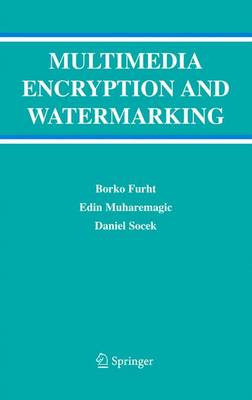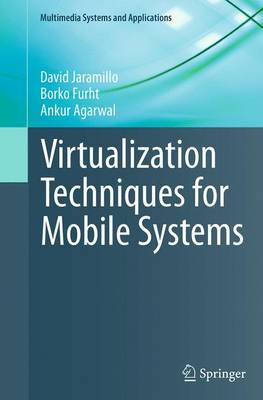Multimedia Systems and Applications
2 primary works • 3 total works
Book 21
Content-Based Image And Video Retrieval addresses the basic concepts and techniques for designing content-based image and video retrieval systems. It also discusses a variety of design choices for the key components of these systems. This book gives a comprehensive survey of the content-based image retrieval systems, including several content-based video retrieval systems. The survey includes both research and commercial content-based retrieval systems. Content-Based Image And Video Retrieval includes pointers to two hundred representative bibliographic references on this field, ranging from survey papers to descriptions of recent work in the area, entire books and more than seventy websites. Finally, the book presents a detailed case study of designing MUSE–a content-based image retrieval system developed at Florida Atlantic University in Boca Raton, Florida.
Book 28
Multimedia Encryption and Watermarking
by Borko Furht, Edin Muharemagic, and Daniel Socek
Multimedia Encryption and Watermarking presents a comprehensive survey of contemporary multimedia encryption and watermarking techniques, which enable a secure exchange of multimedia intellectual property.
Part I, Digital Rights Management (DRM) for Multimedia, introduces DRM concepts and models for multimedia content protection, and presents the key players. Part II, Multimedia Cryptography, provides an overview of modern cryptography, with the focus on modern image, video, speech, and audio encryption techniques. This book also provides an advanced concept of visual and audio sharing techniques. Part III, Digital Watermarking, introduces the concept of watermarking for multimedia, classifies watermarking applications, and evaluates various multimedia watermarking concepts and techniques, including digital watermarking techniques for binary images.
Multimedia Encryption and Watermarking is designed for researchers and practitioners, as well as scientists and engineers who design and develop systems for the protection of digital multimedia content. This volume is also suitable as a textbook for graduate courses on multimedia security.
Virtualization Techniques for Mobile Systems
by David Jaramillo, Borko Furht, and Ankur Agarwal
Several approaches for mobile virtualization are described, all creating secure and secluded environments for enterprise information. The authors present a reference architecture that allows for integration with existing enterprise mobile device management systems and provides a lightweight solution for containerizing mobile applications. This solution is then benchmarked with several of the existing mobile virtualization solutions across a range of mobile devices.
Virtualization Techniques for Mobile Systems is an excellent resource for researchers and professionals working in mobile systems. Advanced-level students studying computer science and electrical engineering will also find the content helpful.


